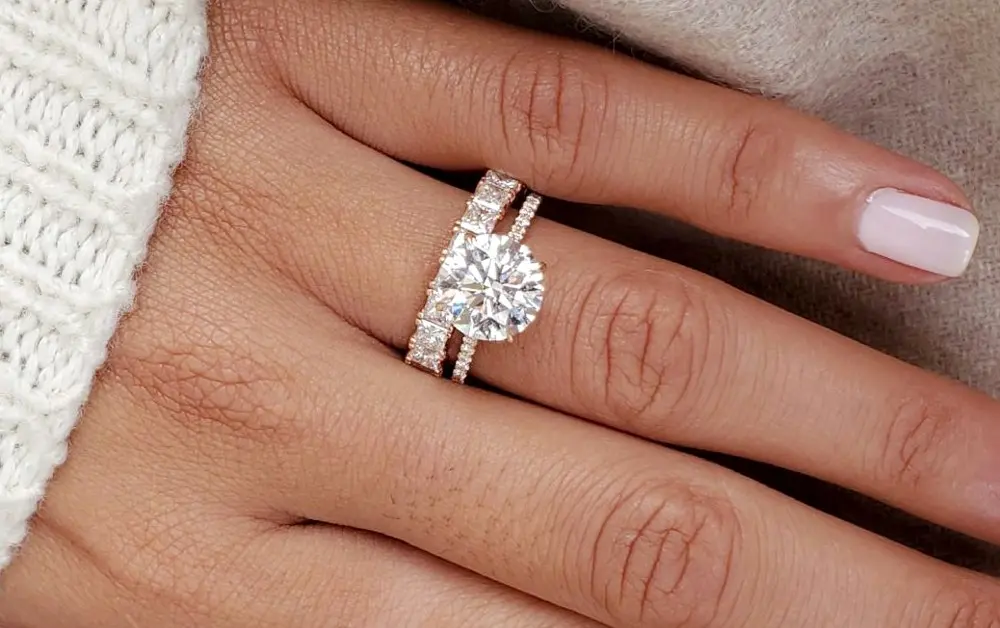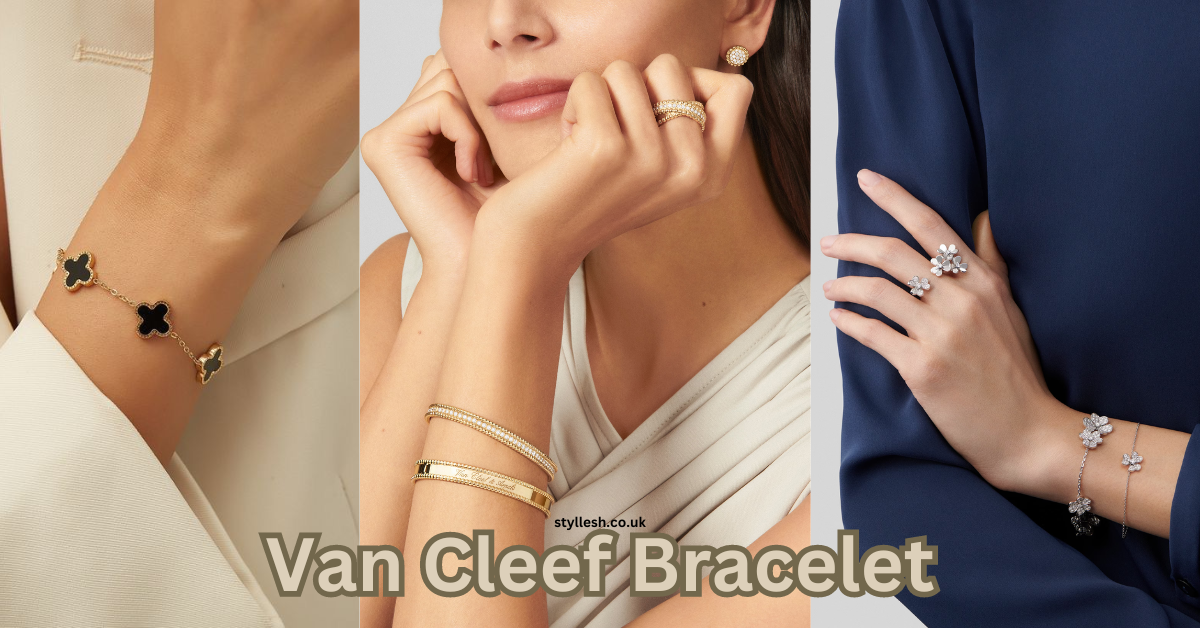
Explore Lab Grown Diamond Rings, an ethical, sustainable, and affordable alternative to natural diamonds. Discover their beauty, durability, and growing popularity in the jewelry industry.
Table of Contents
ToggleIntroduction
In recent years, the jewelry industry has witnessed a shift in consumer preferences, with more people gravitating toward labgrown diamond rings as an ethical, sustainable, and often more affordable alternative to natural diamonds. These lab-grown gems have gained significant attention due to their indistinguishable appearance from mined diamonds and their eco-friendly origins. As technology continues to advance, lab-grown diamonds are becoming an increasingly popular option for engagement rings, wedding bands, and fine jewelry. This blog will explore everything you need to know about labgrown diamond rings, from how they are made to why they’re becoming the go-to choice for today’s conscientious buyers.
What Are Lab Grown Diamond Rings?
Labgrown diamond rings, as the name suggests, feature diamonds that are cultivated in a laboratory setting rather than extracted from the earth. While these diamonds are created through a man-made process, they share the exact physical, chemical, and optical properties as natural diamonds. Contrary to common belief, lab-grown diamonds are not synthetic or imitation gemstones; they are real diamonds, just created under controlled conditions in a shorter amount of time. The process of creating lab-grown diamonds involves two primary methods: High-Pressure High Temperature (HPHT) and Chemical Vapor Deposition (CVD). Both techniques replicate the conditions under which natural diamonds form, ensuring that the final product is virtually identical to diamonds found in nature.
The Appeal of Lab Grown Diamond Rings
One of the key reasons lab-grown diamond rings are gaining popularity is their ethical and environmental benefits. Unlike natural diamonds, which are often mined in ways that cause environmental damage and human suffering, lab-grown diamonds are created in a manner that eliminates these concerns. The mining of natural diamonds has historically been associated with land degradation, deforestation, and harmful carbon emissions, not to mention the potential for human rights abuses in conflict zones. Lab-grown diamonds, on the other hand, are free from such concerns, offering a guilt-free alternative for those who care about the planet and social justice.

How Lab Grown Diamond Rings Are Made
The process of creating labgrown diamond rings is fascinating and highly scientific. In the HPHT method, a small diamond seed is placed in a chamber where it is subjected to high pressure and temperatures exceeding 2,000 degrees Celsius. This mimics the natural conditions found deep within the Earth’s mantle, allowing carbon atoms to bond and form a diamond around the seed. The CVD method, meanwhile, involves placing a diamond seed in a chamber filled with carbon-rich gases. A microwave beam is used to break down the gases, causing carbon atoms to deposit onto the seed and gradually form a diamond. Both methods produce diamonds that are chemically and optically identical to those mined from the Earth, making lab-grown diamond rings indistinguishable from their natural counterparts.
Are Lab Grown Diamond Rings Cheaper Than Natural Diamonds?
One of the most compelling reasons to choose lab-grown diamond rings is their affordability. Because they are produced in a laboratory rather than mined from the Earth, lab-grown diamonds tend to cost significantly less than natural diamonds of similar quality. On average, lab-grown diamonds can be 30-40% less expensive than their mined counterparts, making them an attractive option for couples on a budget. The lower price does not reflect a compromise in quality, however, as lab-grown diamonds are held to the same grading standards as natural diamonds in terms of cut, clarity, color, and carat weight.
The Ethical Considerations of Lab Grown Diamond Rings
For many consumers, the ethical implications of their purchases are just as important as the quality of the product itself. Lab-grown diamond rings offer a clear advantage in this regard, as they eliminate the need for environmentally damaging mining practices and the potential for conflict diamonds, also known as “blood diamonds.” These are diamonds mined in war-torn regions, where profits are often used to finance armed conflict and human rights abuses. By choosing lab-grown diamond rings, buyers can be confident that their purchase supports a more sustainable and humane approach to diamond production.
The Environmental Impact of Lab Grown Diamond Rings
In addition to the ethical benefits, lab-grown diamond rings also have a significantly lower environmental impact than natural diamonds. The process of mining natural diamonds can cause irreversible damage to ecosystems, as vast amounts of land are cleared and excavated to extract diamonds from the earth. This leads to deforestation, soil erosion, and loss of biodiversity. Furthermore, diamond mining is a highly water-intensive process, often depleting local water sources and contributing to water scarcity in certain regions. In contrast, the production of lab-grown diamonds requires far fewer natural resources, using less water and generating fewer carbon emissions.

Are Lab Grown Diamond Rings Durable?
Durability is an important factor to consider when purchasing any piece of jewelry, and lab-grown diamond rings are no exception. The good news is that lab-grown diamonds are just as durable as natural diamonds. With a hardness rating of 10 on the Mohs scale, both lab-grown and natural diamonds are the hardest known materials, making them incredibly resistant to scratching and everyday wear. This means that a lab-grown diamond ring will last just as long as a natural diamond ring, providing a lifetime of beauty and sparkle.
The Aesthetic Appeal of Lab Grown Diamond Rings
When it comes to appearance, lab-grown diamond rings are indistinguishable from natural diamonds. Because they share the same chemical composition and crystal structure, lab-grown diamonds exhibit the same brilliance, fire, and scintillation as mined diamonds. This means that whether you’re admiring a lab-grown diamond ring under natural sunlight or artificial lighting, it will sparkle just as brilliantly as a natural diamond. Additionally, lab-grown diamonds are available in a wide range of cuts, shapes, and sizes, giving buyers plenty of options to suit their personal style.
Customizing Lab Grown Diamond Rings
One of the many advantages of lab-grown diamond rings is the ability to customize them to your exact specifications. Many jewelers offer the option to design your own ring, allowing you to choose everything from the diamond’s cut and carat weight to the setting and metal band. Whether you’re looking for a classic solitaire ring or a more intricate design with accent stones, lab-grown diamonds offer endless possibilities for creating a one-of-a-kind piece of jewelry. Additionally, because lab-grown diamonds are more affordable than natural diamonds, you may be able to afford a larger or higher-quality diamond without exceeding your budget.
Popular Retailers Offering Lab Grown Diamond Rings
Several reputable retailers specialize in lab-grown diamond rings, offering a wide selection of styles and customization options. James Allen, for example, is known for its impressive collection of lab-grown diamond engagement rings, which can be viewed in stunning 360° HD. This allows you to see every detail of the diamond before making a purchase. Jared is another well-known jeweler that offers an extensive collection of lab-created diamond rings, both in-store and online. Angara, meanwhile, provides a variety of lab-grown diamond rings for women, with free shipping and easy returns to ensure a seamless shopping experience.

Lab Grown Diamond Rings for Engagements
Labgrown diamond rings are quickly becoming a popular choice for engagement rings, as couples seek out more ethical and affordable alternatives to traditional diamonds. Engagement is a deeply personal milestone, and many couples are choosing to symbolize their commitment with a ring that reflects their values. Lab-grown diamonds offer the perfect solution, combining the timeless beauty of a diamond with a more modern approach to sustainability and social responsibility. Whether you’re looking for a classic round-cut diamond or a trendy oval or pear shape, lab-grown diamonds offer endless possibilities for creating a ring that perfectly captures your love story.
Lab Grown Diamond Wedding Bands
In addition to engagement rings, lab-grown diamonds are also an excellent choice for wedding bands. Many couples choose to incorporate lab-grown diamonds into their wedding bands to complement their engagement rings or as standalone pieces. Lab-grown diamond wedding bands offer the same level of durability and sparkle as natural diamonds, ensuring that your ring will stand the test of time. Whether you prefer a simple band with a row of diamonds or a more intricate design, lab-grown diamond wedding bands are a beautiful and ethical way to celebrate your marriage.
Are Lab Grown Diamond Rings a Good Investment?
When it comes to investment value, labgrown diamond rings may not hold their value in the same way that natural diamonds do. While natural diamonds are often seen as a store of wealth, lab-grown diamonds tend to have a lower resale value due to their abundance and lower production costs. However, this does not diminish their appeal as beautiful and affordable alternatives to natural diamonds. For many buyers, the ethical and environmental benefits of lab-grown diamonds outweigh any concerns about resale value, making them a smart choice for those who prioritize sustainability over investment potential.
Lab Grown Diamond Rings vs. Moissanite
When shopping for an engagement ring or fine jewelry, some buyers may also consider moissanite as an alternative to diamonds. While moissanite is a beautiful gemstone in its own right, it differs from lab-grown diamonds in several key ways. First, moissanite is not a diamond; it is a different type of gemstone with a different chemical composition and crystal structure. As a result, moissanite exhibits a different type of brilliance and sparkle, often described as having more “fire” than a diamond. While moissanite can be a great option for those looking for a more affordable gemstone, it does not offer the same level of durability, brilliance, or prestige as lab-grown diamonds.

The Growing Popularity of Lab Grown Diamond Rings
Labgrown diamond rings have come a long way in recent years, with more consumers embracing them as a viable alternative to natural diamonds. Once viewed as a niche product, lab-grown diamonds are now available at many major jewelry retailers, and their popularity continues to rise. As more people become aware of the ethical and environmental benefits of lab-grown diamonds, as well as their affordability, it’s likely that their market share will continue to grow. Whether you’re shopping for an engagement ring, a wedding band, or a special gift, lab-grown diamonds offer a beautiful and responsible choice.
The Role of Technology in Lab Grown Diamond Rings
The creation of labgrown diamond rings would not be possible without cutting-edge technology. The HPHT and CVD methods used to create lab-grown diamonds rely on advanced machinery and scientific processes that replicate the natural conditions under which diamonds form. As technology continues to evolve, the production of lab-grown diamonds is becoming more efficient and cost-effective, allowing more consumers to access these beautiful and ethical gems. Additionally, advancements in diamond grading technology ensure that lab-grown diamonds are held to the same standards as natural diamonds, giving buyers confidence in the quality of their purchase.
Lab Grown Diamond Rings as a Symbol of Love and Commitment
Diamonds have long been a symbol of love and commitment, and lab-grown diamond rings are no exception. Whether you’re celebrating an engagement, a wedding, or a special anniversary, a lab-grown diamond ring can serve as a lasting reminder of your love and devotion. Many couples choose labgrown diamond rings not only for their beauty but also for the values they represent. By choosing a lab-grown diamond, you’re making a statement about your commitment to ethical sourcing, sustainability, and social responsibility—values that are becoming increasingly important in today’s world.
Are Lab Grown Diamond Rings Right for You?
If you’re in the market for a diamond ring, it’s worth considering whether a lab-grown diamond is the right choice for you. Lab-grown diamonds offer many of the same benefits as natural diamonds, including durability, brilliance, and beauty, but with the added advantages of ethical sourcing and affordability. Whether you’re looking for an engagement ring, a wedding band, or a special gift, lab-grown diamonds are an excellent choice for those who want a stunning piece of jewelry that aligns with their values. Ultimately, the decision comes down to your personal preferences, budget, and priorities.

Conclusion
Lab-grown diamond rings represent the future of fine jewelry, offering a beautiful, ethical, and affordable alternative to natural diamonds. As more consumers prioritize sustainability and social responsibility, lab-grown diamonds are becoming an increasingly popular choice for engagement rings, wedding bands, and special gifts. With their stunning appearance, durability, and lower environmental impact, lab-grown diamonds offer all the beauty of natural diamonds without the ethical concerns. Whether you’re shopping for yourself or a loved one, labgrown diamond rings are a brilliant choice that combines timeless elegance with modern values.
Read Also: How to Revamp Your Wardrobe A Comprehensive Guide





